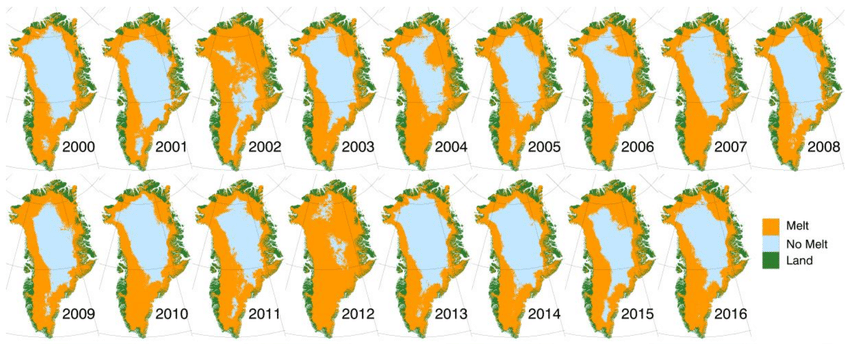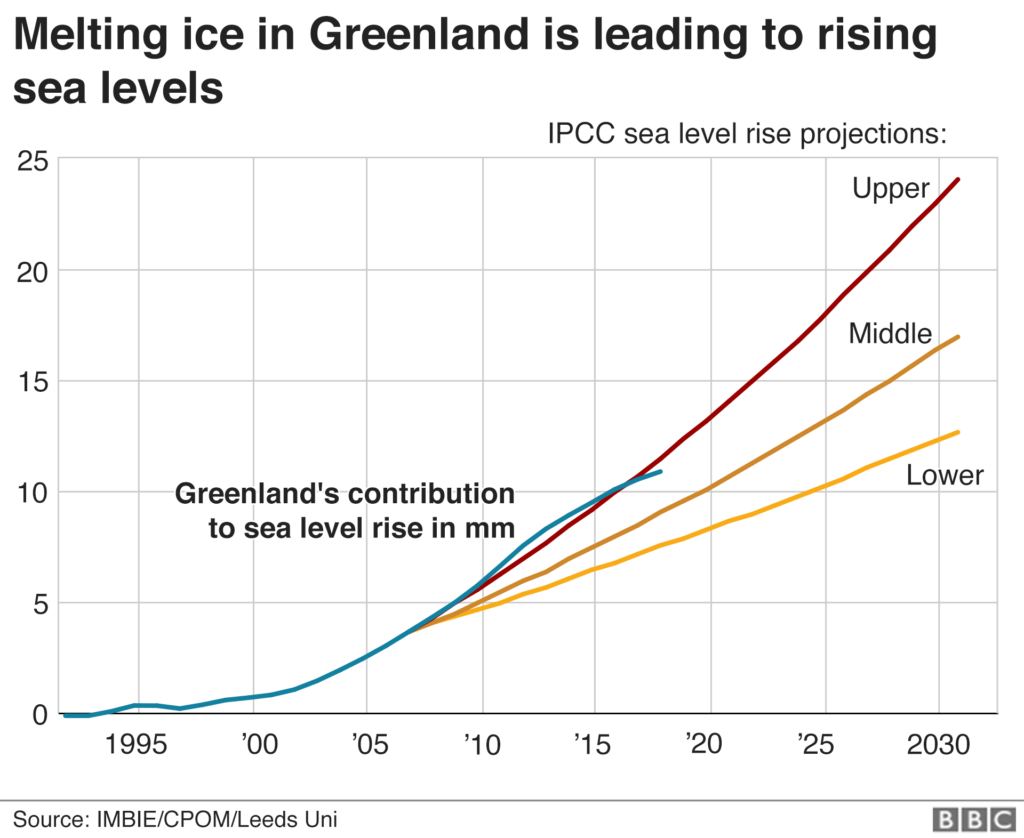The Greenland Ice Sheet (GrIS) is losing mass at an alarming rate. A new study recently discovered that the rate of melting we’re seeing today is likely to be the highest of the last 12,000 years.

The study focused on Greenland because –
- the melting of ice in this part of the world is expected to be the main contributor to sea-level rise
- many well dated geologic constraints of past ice margin change were available which made model-data comparisons possible
- the area is a bit easier to model, as there is limited ice-ocean interaction

The main implication of their conclusions is that Greenland is changing and it is not doing so in a reassuring way. How much ice Greenland loses in the future depends on how much the Arctic warms, which is a consequence of how much greenhouse gases we put into the atmosphere.
Effects are going to be felt worldwide. “For the global community, areas vulnerable to sea-level rise will feel the effect of this melting. Those not near sea-level will not be spared, however.

As the Arctic changes, the global atmospheric and oceanic circulation will change, altering weather patterns and regional climate. So really changes in Greenland and the Arctic go beyond just sea-level rise. That is why we all should care, not just those who live near the sea.”
Reference- Journal Nature, The Beam, Clean Technica, National Geographic, NOAA Climate, IPCC, Research Gate, BBC






